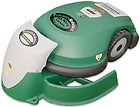Last night i was going through the various latest seminar topics posted by one of my friend.Out of those topics i found this topic to be something very interesting i.e. NANOTUBE SUPER-BATTERIES.
Have you ever thought of a battery whose size is in the range of microns & having the capacity of about 10-12 v & providing a total power of about 1watt;i know it sounds tough n even more tough to digest;but yes this is possible with this lastest invented super batteries whose size could be in nano range & deliver a power of much more than than our expectations.
come on let us know something more about it:
about its fabrication & characteristics.
Dense films of carbon nanotubes store large amounts of energy.
Researchers at MIT have made pure, dense, thin films of carbon nanotubes that show promise as electrodes for higher-capacity batteries and supercapacitors. Dispensing with the additives previously used to hold such films together improved their electrical properties, including the ability to carry and store a large amount of charge.
Carbon nanotubes can carry and store more charge than other forms of carbon, in part because their nanoscale structure gives them a very large surface area. But conventional methods for making them into films leave significant gaps between individual nanotubes or require binding materials to hold them together. Both approaches reduce the films' conductivity--the ability to convey charge--and capacitance--the ability to store it.
The MIT group, led by chemical-engineering professor Paula Hammond and mechanical-engineering professor Yang Shao-Horn, made the new nanotube films using a technique called layer-by-layer assembly. First, the group creates water solutions of two kinds of nanotubes: one type has positively charged molecules bound to them, and the other has negatively charged molecules. The researchers then alternately dip a very thin substrate, such as a silicon wafer, into the two solutions. Because of the differences in their charge, the nanotubes are attracted to each other and hold together without the help of any glues. And nanotubes of similar charge repel each other while in solution, so they form thin, uniform layers with no clumping.
The resulting films can then be detached from the substrate and baked in a cloud of hydrogen to burn off the charged molecules, leaving behind a pure mat of carbon nanotubes. The films are about 70 percent nanotubes; the rest is empty space, pores that could be used to store lithium or liquid electrolytes in future battery electrodes. The films "can store a lot of energy and discharge it rapidly," says Hammond. The capacitance of the MIT films--that is, their ability to store electrical charge--is one of the highest ever measured for carbon-nanotube films, says Shao-Horn. This means that they could serve as electrodes for batteries and supercapacitors that charge quickly, have a high power output, and have a long life.
The MIT group is not the first to use the layering technique to create nanotube films. But previously, researchers using the method layered a positively charged polymer with negatively charged nanotubes, resulting in films that were only half nanotubes. No polymer can equal the electrical conductivity of carbon nanotubes, so these films' electrical properties weren't as impressive as those of Hammond and Shao-Horn. Others have made films by growing the nanotubes from the substrate up, but the resulting forest of vertically aligned nanotubes is insufficiently dense.




 Click on "Bounce to Sender" to fake bounce the sender of the email message. Note: You can also delete the message along with bouncing it by clicking on the field "In addition, delete this message" (marked in red).
Click on "Bounce to Sender" to fake bounce the sender of the email message. Note: You can also delete the message along with bouncing it by clicking on the field "In addition, delete this message" (marked in red).























